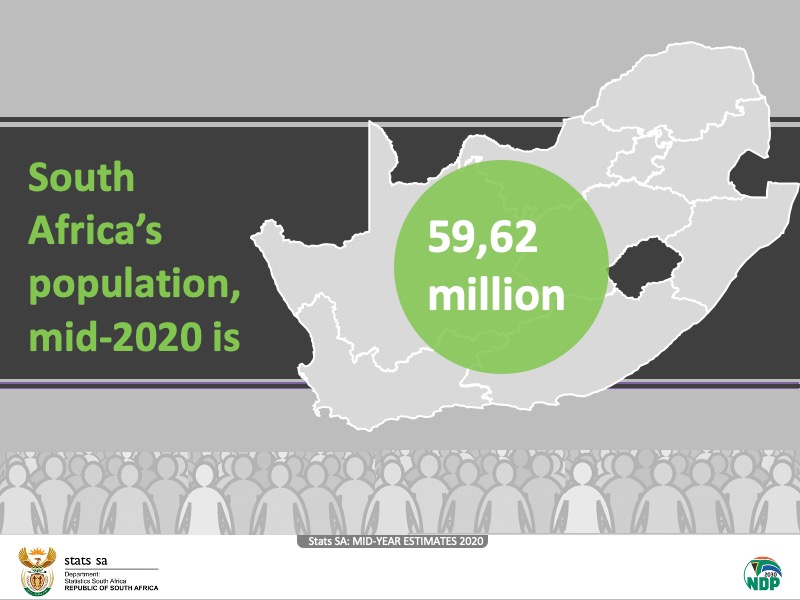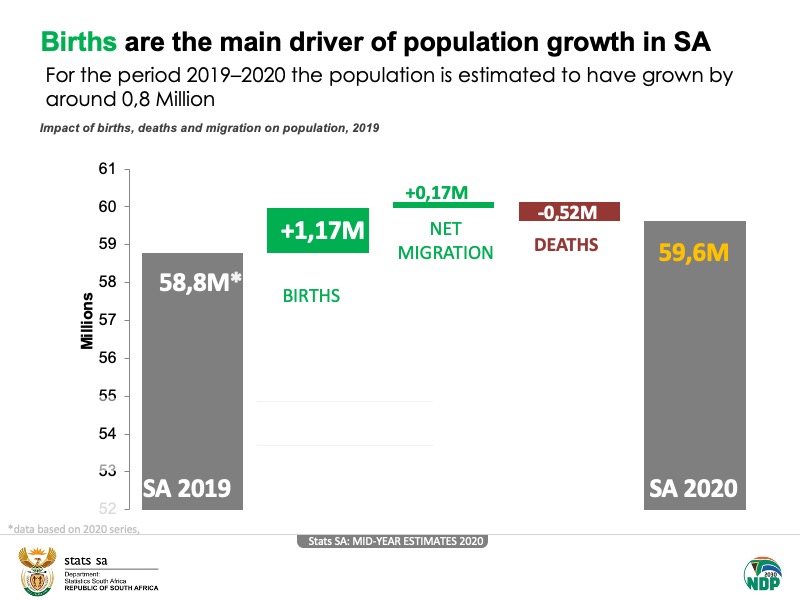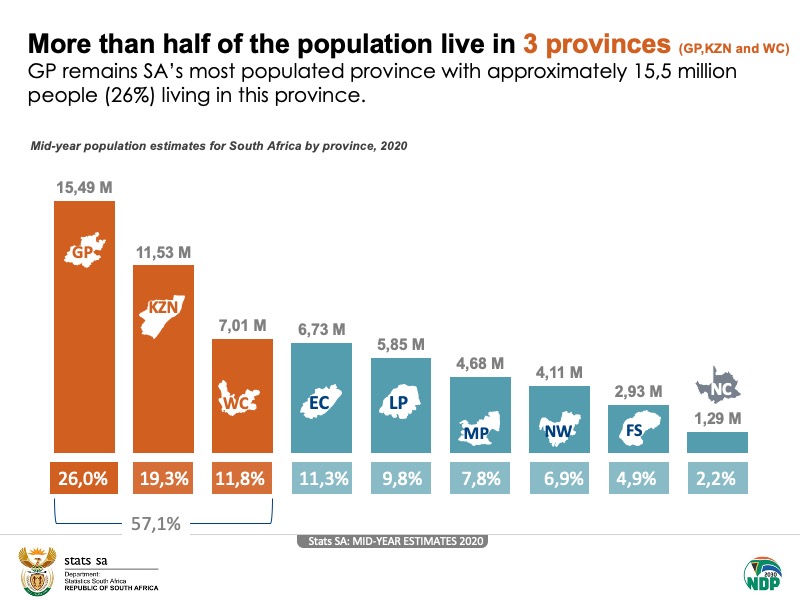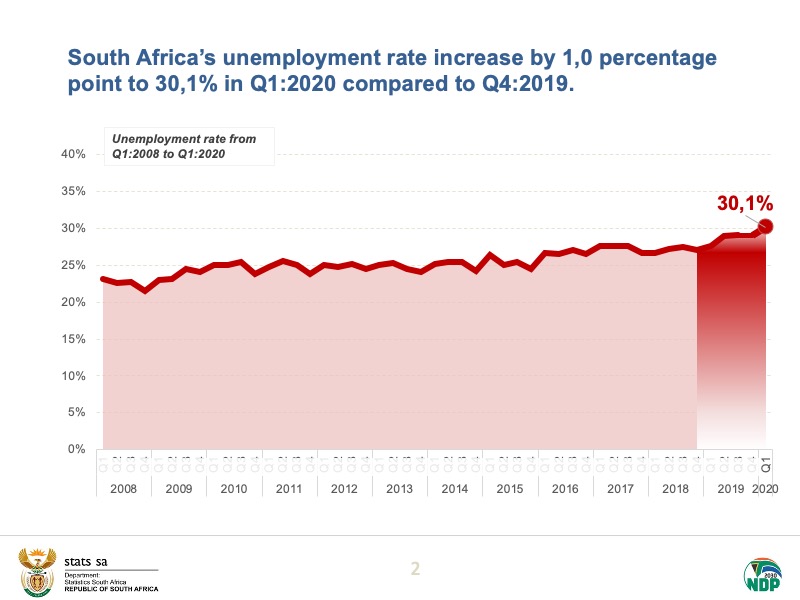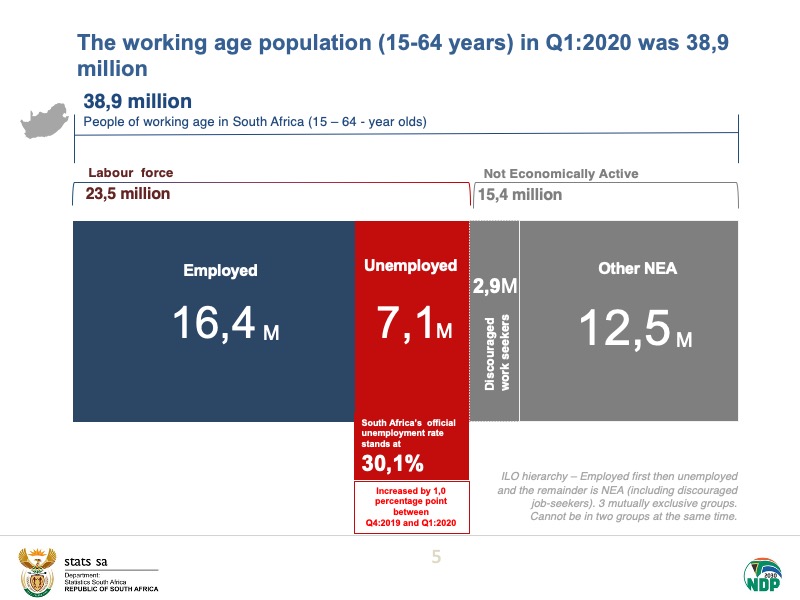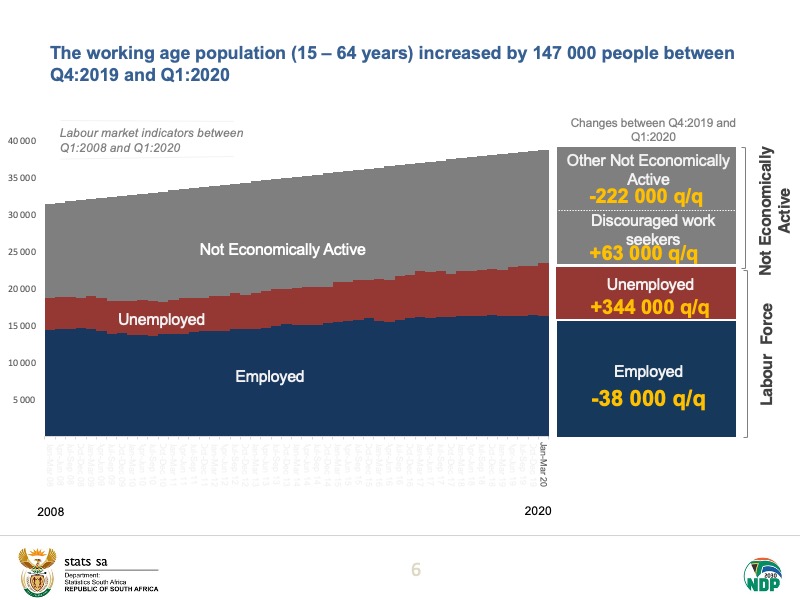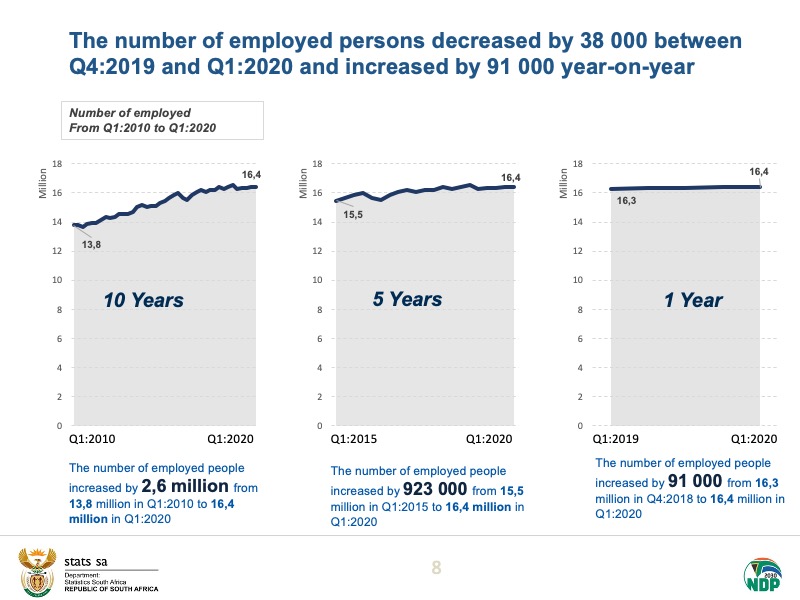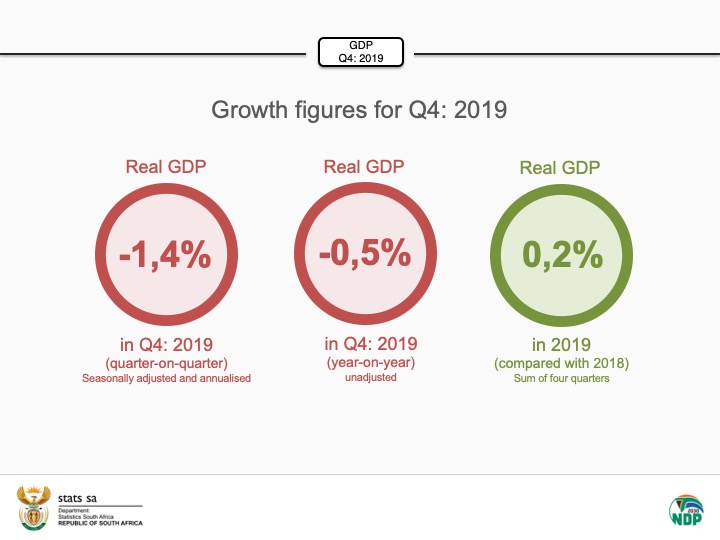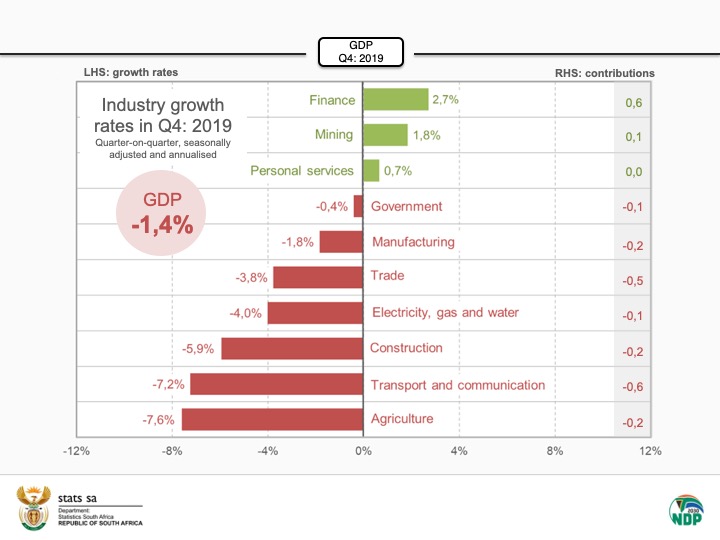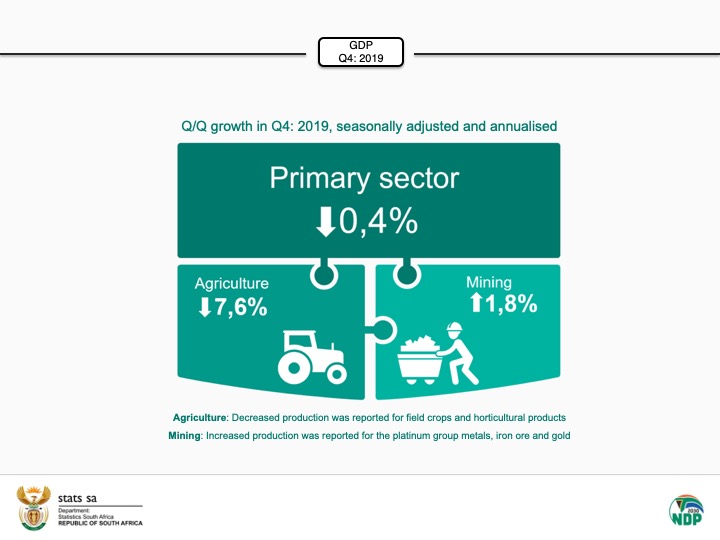
[Thread]
South Africa’s #unemployment rate increased by 1,8 percentage points to 34,4% in Q2:2021 compared to Q1:2021.
#StatsSA
South Africa’s #unemployment rate increased by 1,8 percentage points to 34,4% in Q2:2021 compared to Q1:2021.
#StatsSA

#COVID19 Impact on data collection for the Quarterly Labour Force Survey (QLFS).
Read more here: statssa.gov.za/?p=14606
#StatsSA #unemployment #employment
Read more here: statssa.gov.za/?p=14606
#StatsSA #unemployment #employment

There were about 54 000 less people employed in Q2:2021 than Q1:2021.
Read more here: statssa.gov.za/?p=14606
#StatsSA #unemployment

Read more here: statssa.gov.za/?p=14606
#StatsSA #unemployment

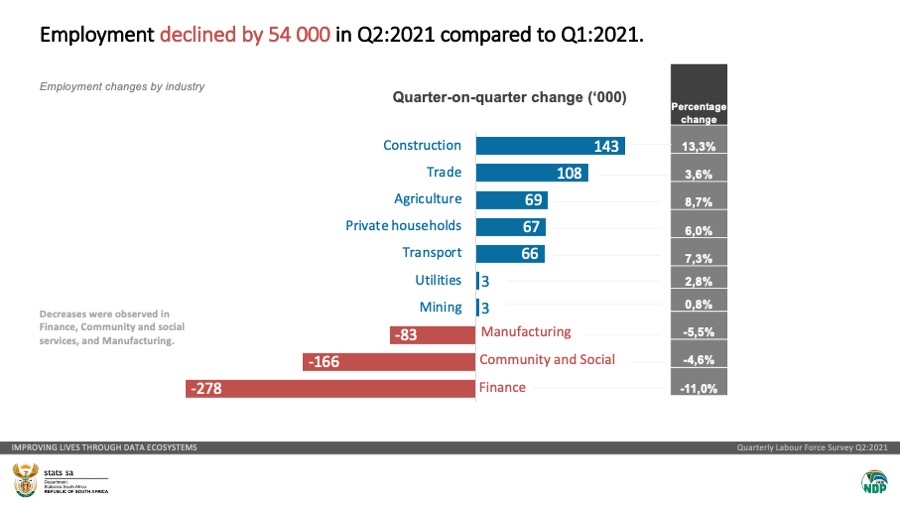
There were increases in both unemployed and discouraged work seekers in Q2:2021
Read more here: statssa.gov.za/?p=14606
#StatsSA #unemployment
Read more here: statssa.gov.za/?p=14606
#StatsSA #unemployment

The number of Not Economically Active persons declined by 386 000 in Q2:2021 compared to Q1:2021.
Read more here: statssa.gov.za/?p=14606
#StatsSA #unemployment
Read more here: statssa.gov.za/?p=14606
#StatsSA #unemployment

The Labour force participation rate increased by 1,1 percentage points from 56,4% in Q1:2021 to 57,5% in Q2:2021.
Read more here: statssa.gov.za/?p=14606
#StatsSA #employment
Read more here: statssa.gov.za/?p=14606
#StatsSA #employment

EC recorded the highest official and expanded #unemployment rates. LP and NC provinces have more than 15,0 percentage points difference between their expanded and official unemployment rates.
Read more here: statssa.gov.za/?p=14606
#StatsSA
Read more here: statssa.gov.za/?p=14606
#StatsSA

The formal sector in South Africa accounts for 68,3% of total #employment.
Read more here: statssa.gov.za/?p=14606
#StatsSA
Read more here: statssa.gov.za/?p=14606
#StatsSA

Formal sector #employment decreased by 375 000 jobs between Q1:2021 and Q2:2021.
Read more here: statssa.gov.za/?p=14606
#StatsSA
Read more here: statssa.gov.za/?p=14606
#StatsSA
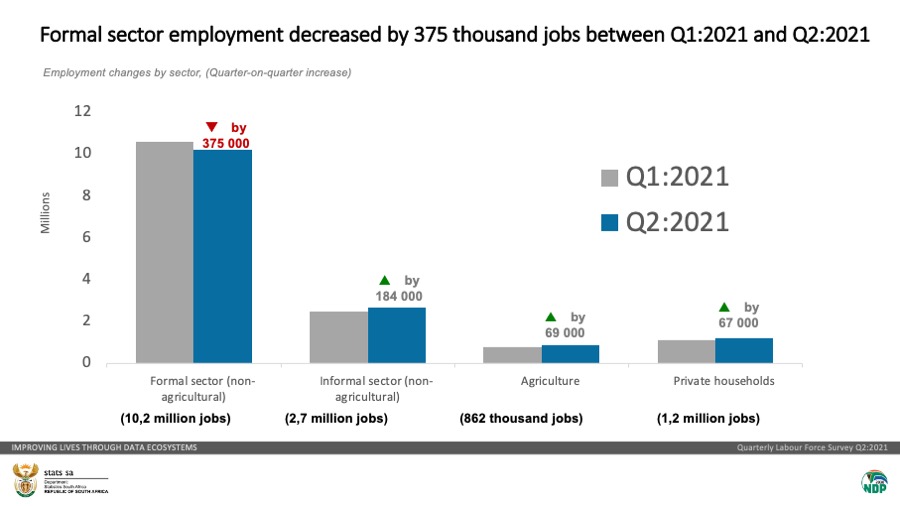
Trade, #construction, and #agriculture have higher #employment shares relative to their #GDP contribution.
Read more here: statssa.gov.za/?p=14606
#StatsSA
Read more here: statssa.gov.za/?p=14606
#StatsSA

Graduate #unemployment is 23,4% points lower than the national official unemployment rate.
Read more here: statssa.gov.za/?p=14606
#StatsSA
Read more here: statssa.gov.za/?p=14606
#StatsSA

Youth aged 15-24 years and 25-34 years recorded the highest #unemployment rates of 64,4% and 42,9% respectively.
Read more here: statssa.gov.za/?p=14606
#StatsSA
Read more here: statssa.gov.za/?p=14606
#StatsSA
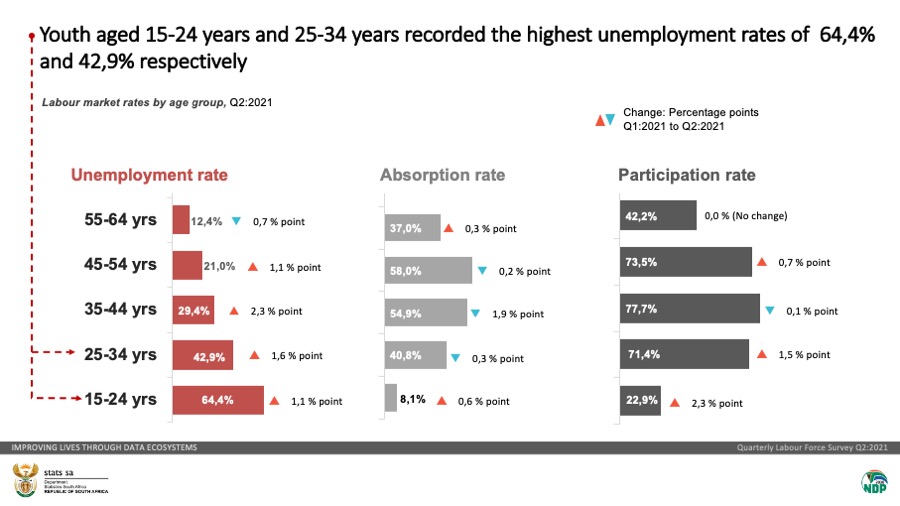
Approximately 3,4 million (33,0%) out of 10,2 million young people aged 15-24 years were not in #employment, #education, or #training (NEET).
Read more here: statssa.gov.za/?p=14606
#StatsSA
Read more here: statssa.gov.za/?p=14606
#StatsSA

The #unemployment rate among the black African (38,2%) population group remains higher than the national average and other population groups. (From 36,7% in Q1:2021).
Read more here: statssa.gov.za/?p=14606
#StatsSA
Read more here: statssa.gov.za/?p=14606
#StatsSA
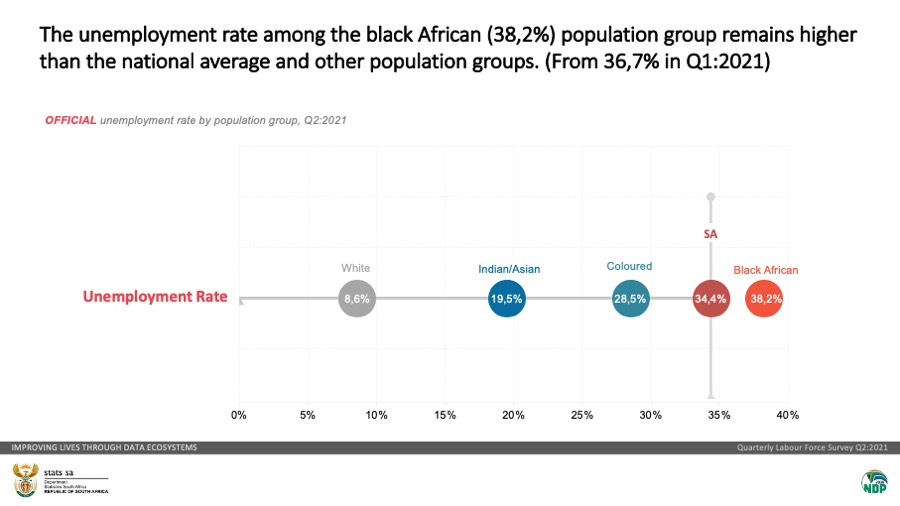
Black African women are the most vulnerable with an #unemployment rate of 41,0% in Q2:2021. This is 4,2 percentage points higher than the national average.
Read more here: statssa.gov.za/?p=14606
#StatsSA
Read more here: statssa.gov.za/?p=14606
#StatsSA

Irrespective of gender, the black African and coloured population groups remain vulnerable in the labour market.
Read more here: statssa.gov.za/?p=14606
#StatsSA #unemployment
Read more here: statssa.gov.za/?p=14606
#StatsSA #unemployment

Of the 14,9 million persons who were employed in Q2:2021, at least 8 in every 10 (82,7%) were expected to work during the national lockdown by the companies/organisations they work for.
Read more here: statssa.gov.za/?p=14606
#StatsSA #employment
Read more here: statssa.gov.za/?p=14606
#StatsSA #employment

Professionals and Managers were more likely than all other occupations to be working from home.
Read more here: statssa.gov.za/?p=14606
#StatsSA #employment
Read more here: statssa.gov.za/?p=14606
#StatsSA #employment
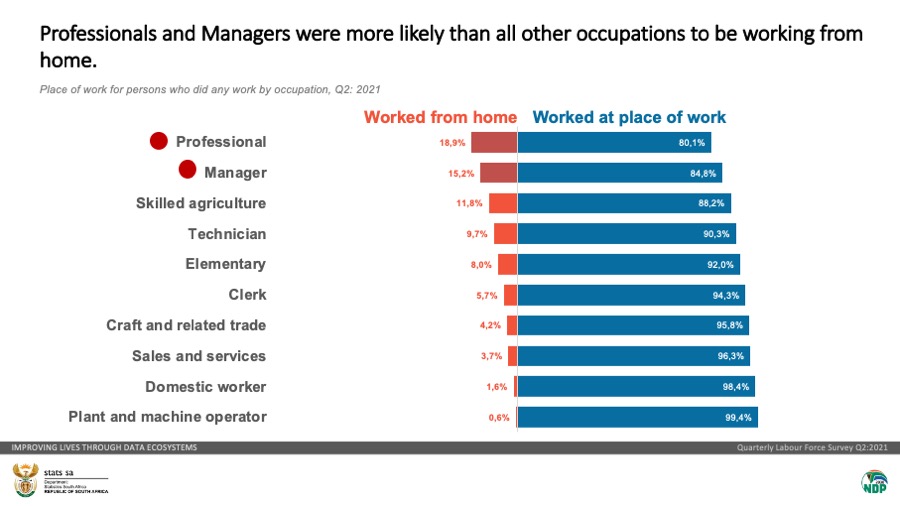
91,0% of the employed continued to receive pay during lockdown compared to those in Q1:2021 (91,3%).
Read more here: statssa.gov.za/?p=14606
#StatsSA #employment
Read more here: statssa.gov.za/?p=14606
#StatsSA #employment

About 9 in 10 graduates received their full salary in Q2:2021. The share of those receiving full salary increased between Q1:2021 and Q2:2021 except among those with matric, where it declined from 86,4% to 85,4%.
Read more here: statssa.gov.za/?p=14606
#StatsSA #employment
Read more here: statssa.gov.za/?p=14606
#StatsSA #employment

• • •
Missing some Tweet in this thread? You can try to
force a refresh








